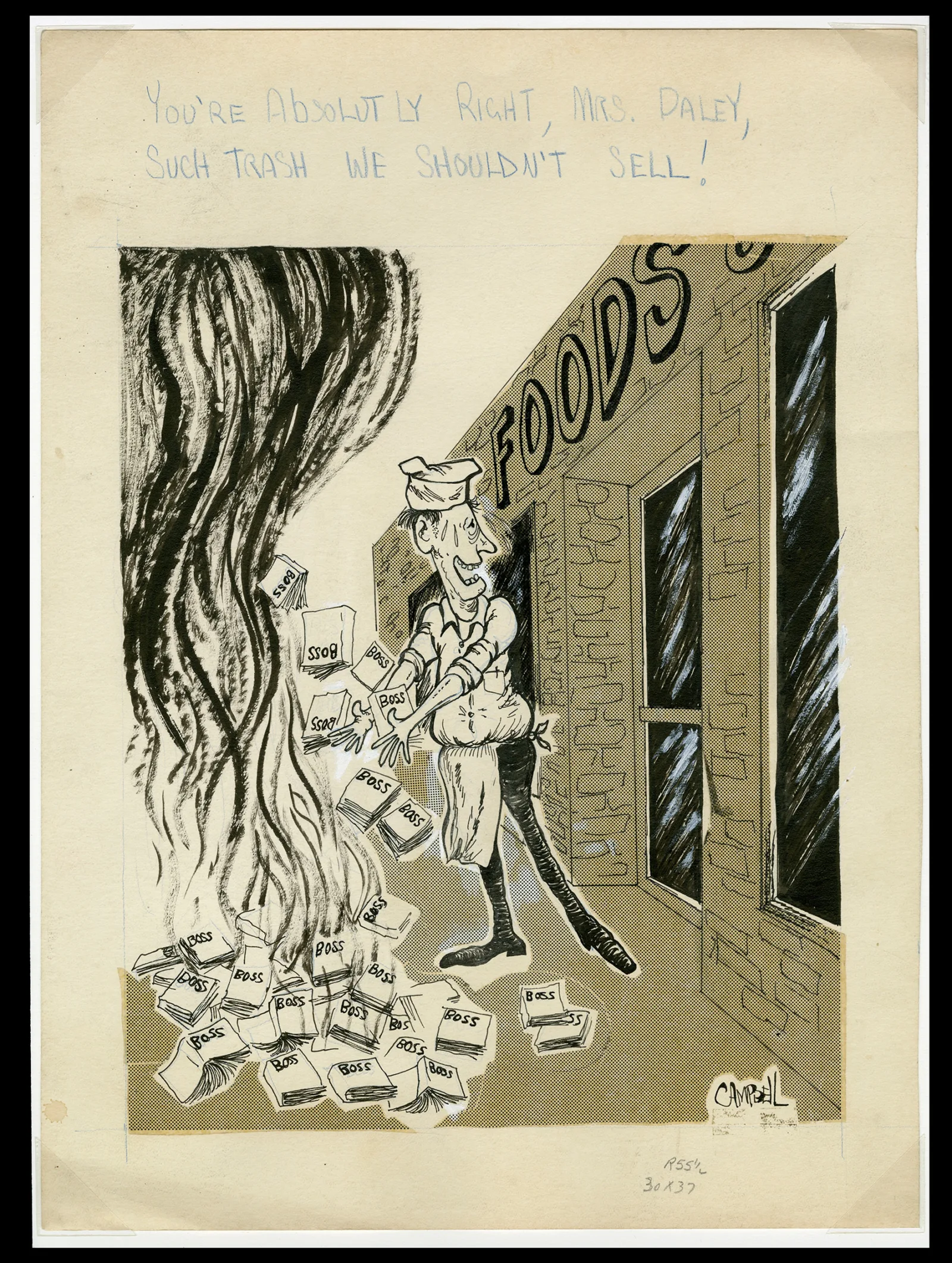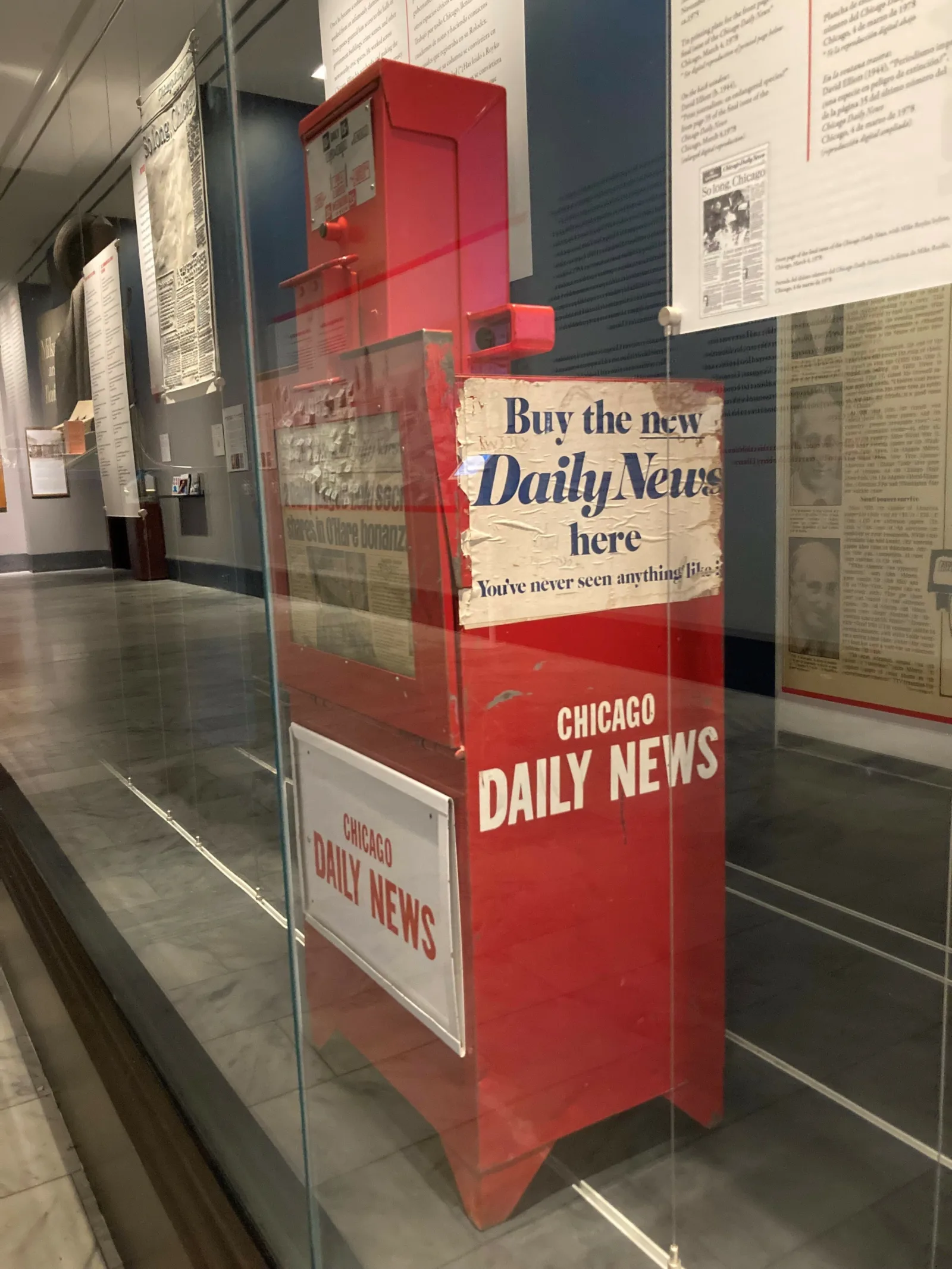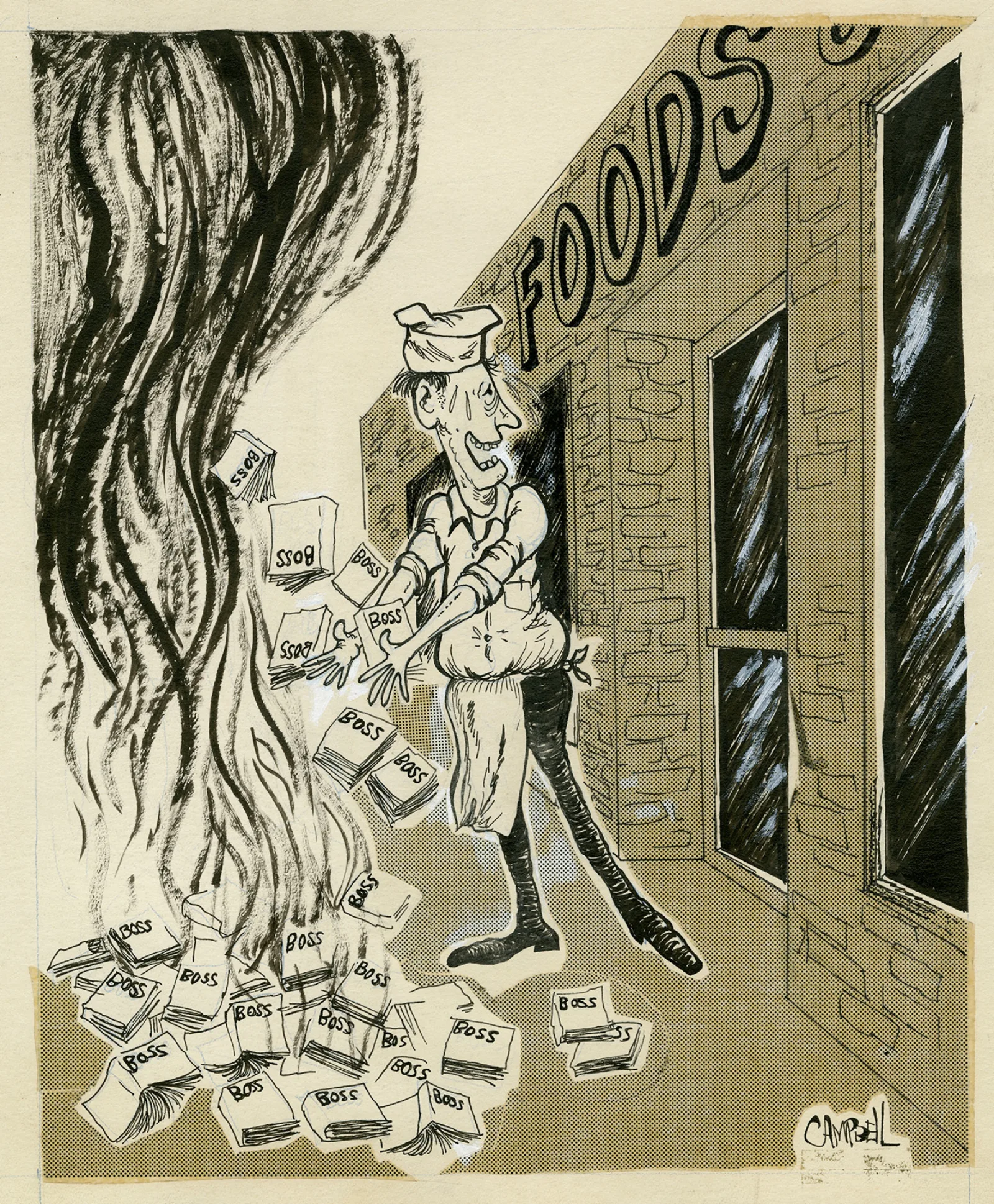Interpretive labels—the primary means of sharing information in exhibition galleries—come in many shapes and sizes. First, there are the large introductory labels at the beginning of an exhibition that present big-picture context and major themes. Then there are the section labels that tell a story about a group of related items and the item-level labels that provide detailed information about an individual object. And, of course, we have the humble tombstone label.

This is the small label that accompanies every item you’ve ever seen in an exhibition, which documents the most basic information: title, date, manufacturer or creator (and their life dates—thus the nickname “tombstone”), location of production, materials, and sometimes details about how the item came to the institution displaying it.
You may have taken it for granted that the basic facts for these labels are well documented and easily determined from the object’s catalog record or the curator’s expertise. But as I learned while preparing the labels for Chicago Style: Mike Royko and Windy City Journalism, it can take quite a bit of research to pin down even something as simple as a date.
Think about it. If an archaeologist 100 years from now were to take a random object from your home and make a tombstone label for it, how would they confirm the information? Some objects (books, letters, diaries, contracts, newspapers and other publications, etc.) routinely include dates, creators, or copyright information about where they were produced. But most objects that we encounter in our everyday lives don’t include any explicit details like that—small clues like a brand name or “Made In” label might be all there is to work from.
As our own exhibition research progressed, we realized the Mike Royko Papers contain an awful lot of objects whose basic details were... fuzzy, to say the least. As visitors may have noticed in the exhibition, some of our tombstone labels include approximate dates and details that have a question mark after them—but the vagueness on the labels was not for a lack of trying!
Here are a few of the creative research methods we used to seek out as many details as we could about the items. Sometimes, despite these valiant efforts, we still had to rely on educated guesses.

Item 1: Editorial Cartoon
What we knew: Chicago Daily News reporter Dennis Byrne broke a story on September 16, 1971, reporting that Boss had been banned from being sold at over 200 National Tea food stores across Chicago, allegedly due to customer complaints. In the following days, the story got more coverage, including speculation that the customer complaints had been filed by people close to Mayor Daley—perhaps even his wife, Sis Daley. Royko responded to the allegations in a column, “The Mayor’s Wife vs. My Book.” Within a week or two, copies of Boss returned to the shelves of National Tea. This cartoon depicts the incident.
What we wanted to know: The original drawing is signed simply by “Campbell,” with no indication of a first name. We wanted to get Campbell’s full name, and if possible, life dates. We also wanted to know the publication date and paper in which the cartoon ran.
Research process: The most obvious first step was to Google “Campbell, Chicago cartoonist.” This produced exactly zero results. My next line of inquiry was to try and find out which publication the cartoon ran in, so that I could search for more information about “Campbell + the publication.” I went up to the Chicago History Museum, where they have full runs available (on microfilm and/or digitally) of all three major Chicago papers from 1971—the Chicago Daily News, the Chicago Tribune, and the Chicago Sun-Times. I spent an afternoon basking in the warm glow of a microfilm reader, scanning editions of all three papers from the weeks before and after September 16, 1971. All to no avail--the cartoon was nowhere. In fact, none of the papers ran ANY editorial cartoons that covered this or other local issues during that time and none of them ran cartoons by anyone named “Campbell.”
Our Best Guess: Whoever this Campbell was, the artist worked up the cartoon as the Boss banning incident was unfolding in September 1971. Perhaps the drawing was nixed for publication by a cautious editor, or perhaps it was only ever created as a gift to entertain Royko. We certainly know that it achieved the latter, as he saved it for the rest of his life!

Item 2: Newspaper Vending Box
What we knew: Royko kept this Chicago Daily News newspaper vending box (or “honor box”) in his basement after the paper folded in 1978. This means it was definitely from before 1978.
What we wanted to know: the date of production of the box itself, and any information about the manufacturer.
Research Process: The first step, as with any artifact, was to closely examine the box for clues—a brand name or makers mark, a date, anything. Unfortunately, this box didn’t have any visible information about the manufacturer. I started searching the internet for this history of newspaper vending machines and learned that the Kaspar Sho-Rack, invented in 1956, became the most-used honor box across the nation and one that very closely resembled Royko’s box—could it indeed be a Kaspar? Even with this knowledge, that only narrowed the date window to 1956-1978, which is still 22 years. I thought I could do better.
I took another look at the honor box, examining the marketing imagery and other markings on the exterior of the box. Suddenly, it hit me! At the top of the box, next to the coin slots, were prices for the weekday and weekend editions—prices that could be matched by looking up a sampling of Chicago Daily News front pages from several years until I found the appropriate dates!
Better than a guess: Using the Newberry’s subscription to Newspapers.com, I was quickly able to determine that the box was last in use in 1975. No clues, however, as to how it made its way into Royko’s basement...

Item 3: Pencil Sketch of Mike Royko
What we thought we knew: The finding aid for the Mike Royko papers described this unsigned, undated, hand drawn portrait of Royko (with his name) as “Original pencil sketch of Royko, used for his column header.”
What we wanted to know: The usual—date, publication that the drawing was used in, and any information about the artist we could find.
Research Process: This one seemed pretty straightforward to me. The Newberry has a(n almost) complete original set of Royko’s daily columns, with the full newspaper pages that his column ran on stored chronologically in oversized boxes. All I had to do was pull a sampling of columns from each decade that he wrote and look at the column headers until I found the first occurrence of the pencil sketch. That would give me the date and publication, and I could hope to find the artist from there.
Would that it were so simple.
My survey immediately revealed that in Royko’s earliest columns from the early 1960s, the header featured a photograph of Mike, not a drawing. I continued through the decades only to confirm that there was never a drawing used for a Royko header, only photographs. I did determine that the drawing was based on the column header Royko started using in 1978, when he shifted from the Daily News to the Sun-Times.
Our Best Guess: Because the column headers only ever used photographs, we can only assume that the drawing was produced not for commercial purposes, but by a fan of some sort, whether a reader, a friend, or a colleague, and presented to Mike as a gift. He obviously cherished it, as he kept it for the rest of his life.
These are just a few examples of the sorts of research that goes into an exhibition!
If you would like to share a story about your experiences reading or interacting with Mike Royko, you can add them to the Newberry’s collection by submitting them here.
About the Author
Kristin Emery is Director of Governance and Strategic Initiatives for the Newberry and co-curator of the exhibition, Chicago Style: Mike Royko and Windy City Journalism, which is on view through September 28, 2024.
